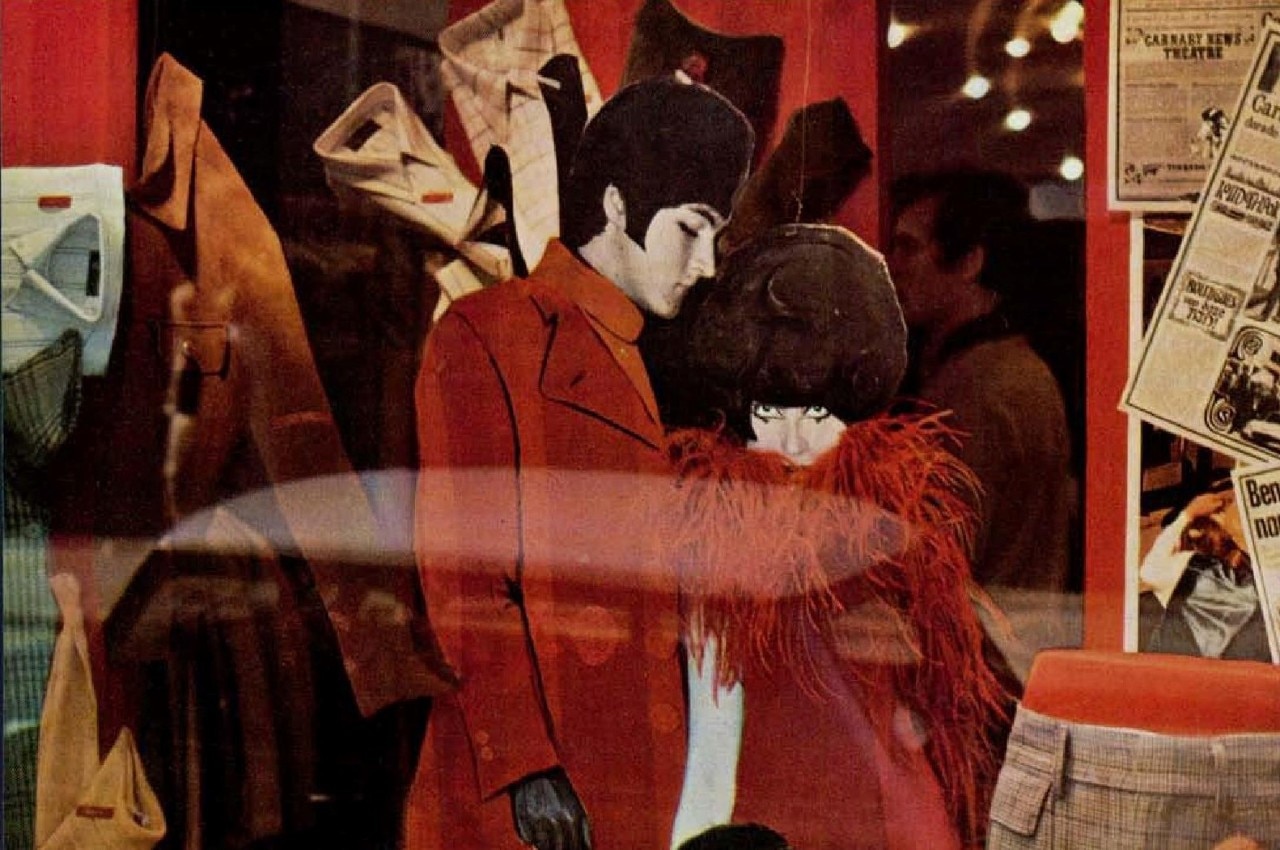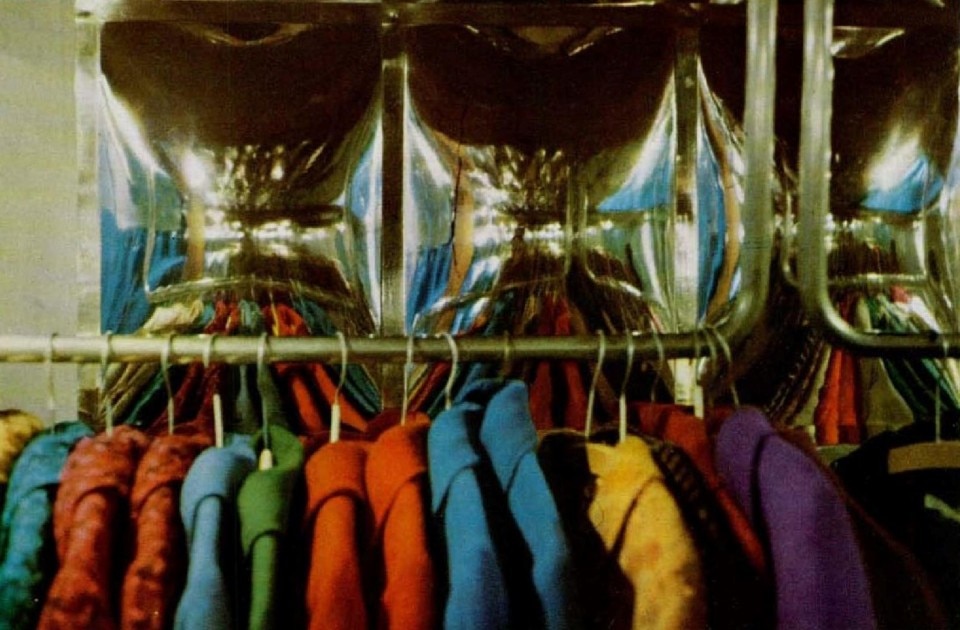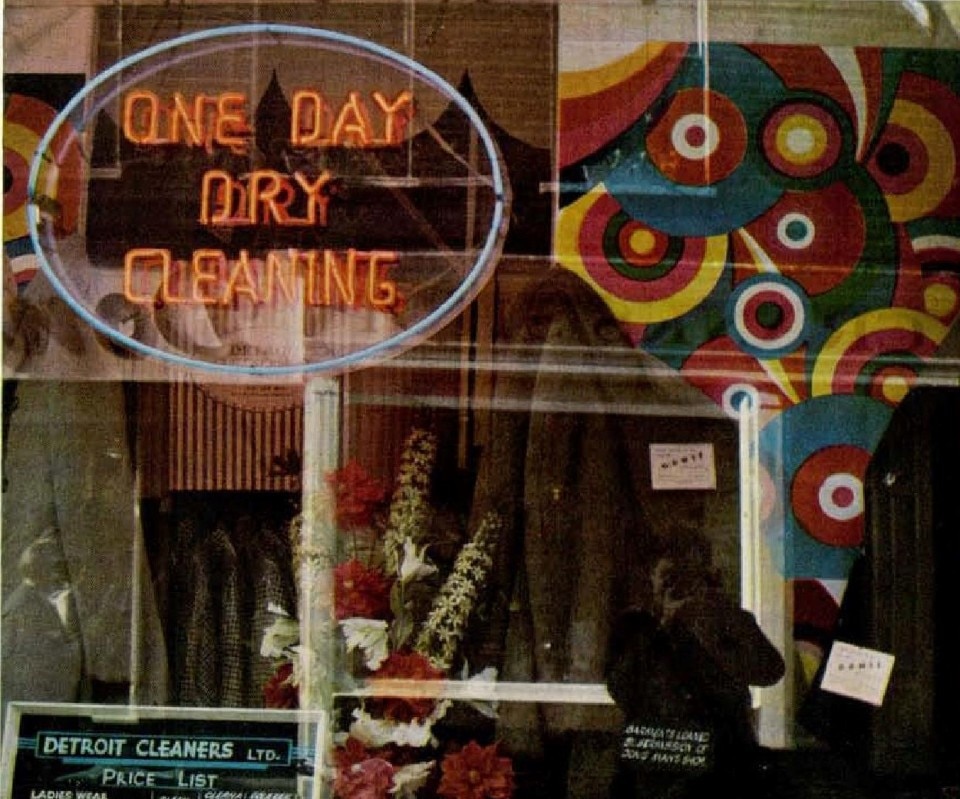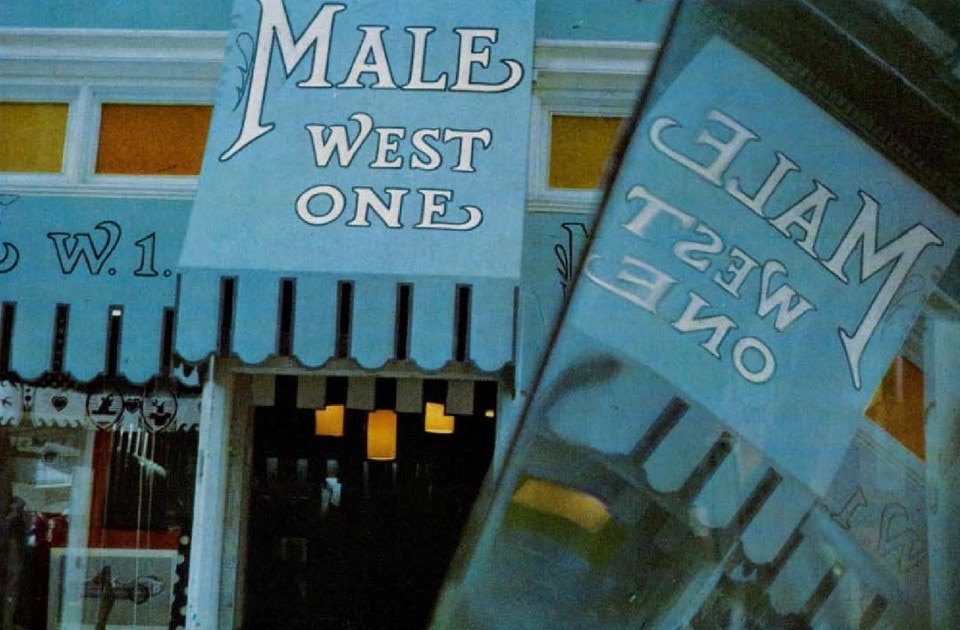In the autumn of 1966 London just woke up from the pipe dream that was the victory of the world cup in the summer. It is a self-indulgent, playful, and apparently even sunnier place than it had ever been since the Luftwaffe bombings that, twenty and counting years before, scarred the Victorian face of the city. 1966 is the year of London, a city where the spirit of the time was incarnated, the new core of youth counterculture that, just up to a few years before, was looking at the existentialist Parisian bohème in search for inspiration.
It is in this one-of-a-kind London – where Michelangelo Antonioni, busy filming his “Blowup”, but also director Tinto Brass operated – that one could spot the young Ettore Sottsass Jr. Characterised by his peculiar attention to the evolution of pop culture, Sottsass felt the need to document, camera in hand, the myth of the boutique.
1966, in fact, captured the transition from the mods and Osborne’s angry young men – the anti-nuke beatniks who, frustrated by the post-war socio-political status quo, were born too early to fully benefit from the wealth perceived by the baby boomers both in the United States and in the European continent – to the velvet-wearing dandies, anticipators of psychedelia and of the myth of the Marrakech Express that would soon shift the new (counter)cultural axis towards India and the Middle East.
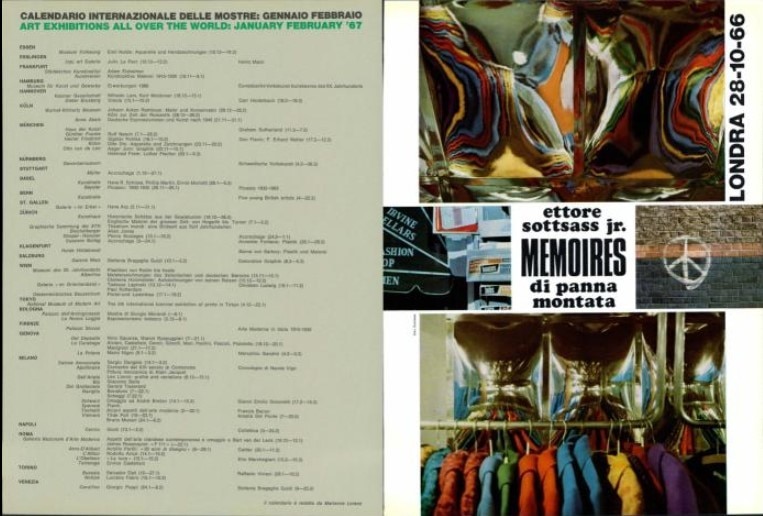
Bridging these clusters are the American-influenced Pop Art made in the London colleges, the underground press, music and fashion; all inter-connected phenomena that find in the independent boutiques of Carnaby Street and King’s Road their home. There, the items of clothing establish a dialogue with interior and graphic design, transforming the creations now into surfaces for Op-Art patterns, now into playful experiments with plastic.
One month ahead of the US release of Antonioni’s masterpiece, in the month of October 1966 Sottsass captures for Domus n.446 (January, 1967) the interiors and exteriors of the shops of Carnaby Streets in the photographic series “Memoires of Whipped Cream. London 28-10-66”. The headline seems to already nod, in its use of French words and in the evocation of candid and nostalgic cream-tinted memories, the great attention that British design would give to the Art Nouveau of the 1920s beginning from 1967.
In the text written by Sottsass himself, the photographer highlights the shops' late opening times and their routines engrained in the city's nightlife and youth culture – something unsual to the eyes of an Italian and a practice that, in the future, would spread to both Italy and the rest of the world with chain stores.
“To see these London shops and these London things that seem to belong to another world, a kind of new world where, all of a sudden, it’s all over with black dresses and pearl necklaces, and where it’s all over with the Swiss-Dutch culture, as well as with the surrealistic-Marienbad one and so on, one doesn't need to wake up too early, half-past-nine will suffice,” writes Sottsass on Domus.
“All you need is that fog isn’t smothering the sky, unlike these days that the planes aren’t taking off and the ships on the Thames blast their sirens and people ring their bells: as long as it is a beautiful October day with a faded sun, it’ll be fine. If you happen to be in the streets around ten in the morning you can see the shop boys cleaning the windows, the beautiful legs of the miniskirt-wearing girls arriving late to open the shops up, to switch the night lights off and to turn the day ones on: you can see lorries driving the stock, some American tourist with a camera, and some more pale girls who have danced the shake until three in the morning and that by ten are already shopping for new garments.”
By focusing on details such as shop signs, mirrors, mannequins and clothes hangers, the Italian designer highlights his interest towards the boutique as a fertile meeting point of design and counterculture, rather than as an environment merely intended for clothing storage
.jpg.foto.rmedium.jpg)
This is a document that, in months where fashion has crowned e-commerce the future of the industry, shows the importance of physical places and of interior design to elevate fashion into a phenomenon able to influence and inspire entire generations.
It doesn’t, therefore, surprise if within a few months, in Rome, Piper Club – conceived by its owner Giancarlo Bordigia on the example of the London nightclubs – launches its own boutique; soon followed by the short-lived entrepreneurial adventure of Italian psychedelic band Equipe 84 who, with their bazaar, try to emulate the Apple Boutique opened – with no success – in London by The Beatles, a shop that featured elements of wall decor and clothes patterns designed by the art collective The Fool.
Sottsass is sublime in capturing, through the distorted reflections of the boutiques’ mirrors, the upcoming psychedelic culture, similar to what over the same months Tinto Brass is doing with the direction of his “Deadly Sweet” (1967).
.jpg.foto.rmedium.jpg)
The film, shot in London and whose storyboard was designed – in full colour – by Italian comic artist and illustration maestro Guido Crepax, is in fact influenced by the same Pop Art and proto-psychedelic voyeurism that can be traced in Sottsass’ photographs.
It comes as no surprise that the feature’s climax is a long scene filmed at the 14 Hour Technicolour Dream of April 1967, one of the most relevant psychedelic music and culture festivals sponsored by the underground magazine International Times, of which Brass’ film is one of the few rare existing visual documents.
The series “Memoires of Whipped Cream” – just as much as the works of directors Antonioni and Brass – reminds us of years when the Italian creative industry kept its eyes wide open on the stimuli coming from abroad, and was able to capture and interpret them on the spot without falling victim of homogenisation – a condition, on the contrary, associated with the pop culture’s absence of temporal and geographical barriers in the days of social media.
Opening image: a Swinging London boutique taken from the photoseries “Memoires of Whipped Cream. London 28-10-66”, Domus n.446, January 1967. Photo: Ettore Sottsass Jr.


